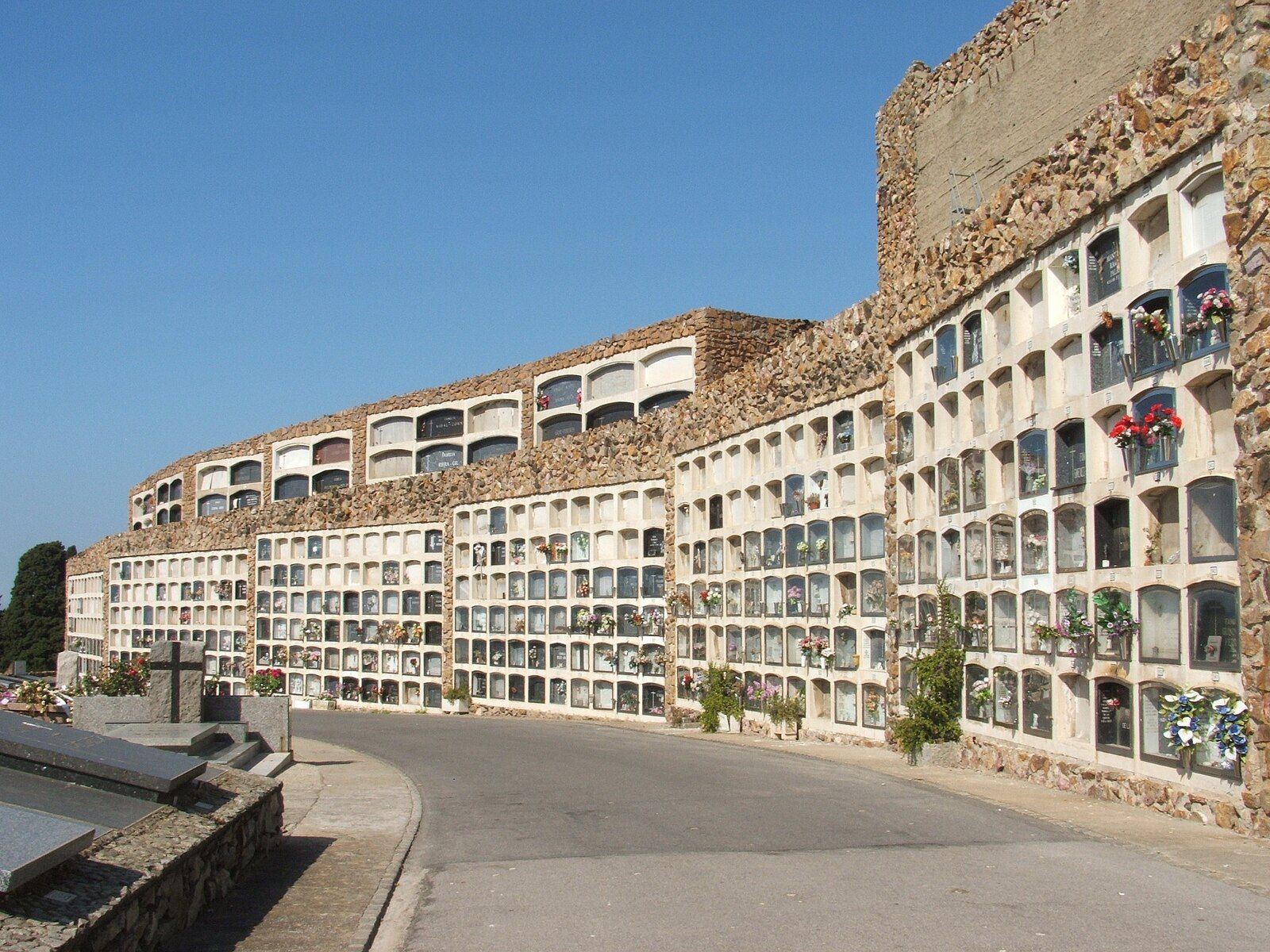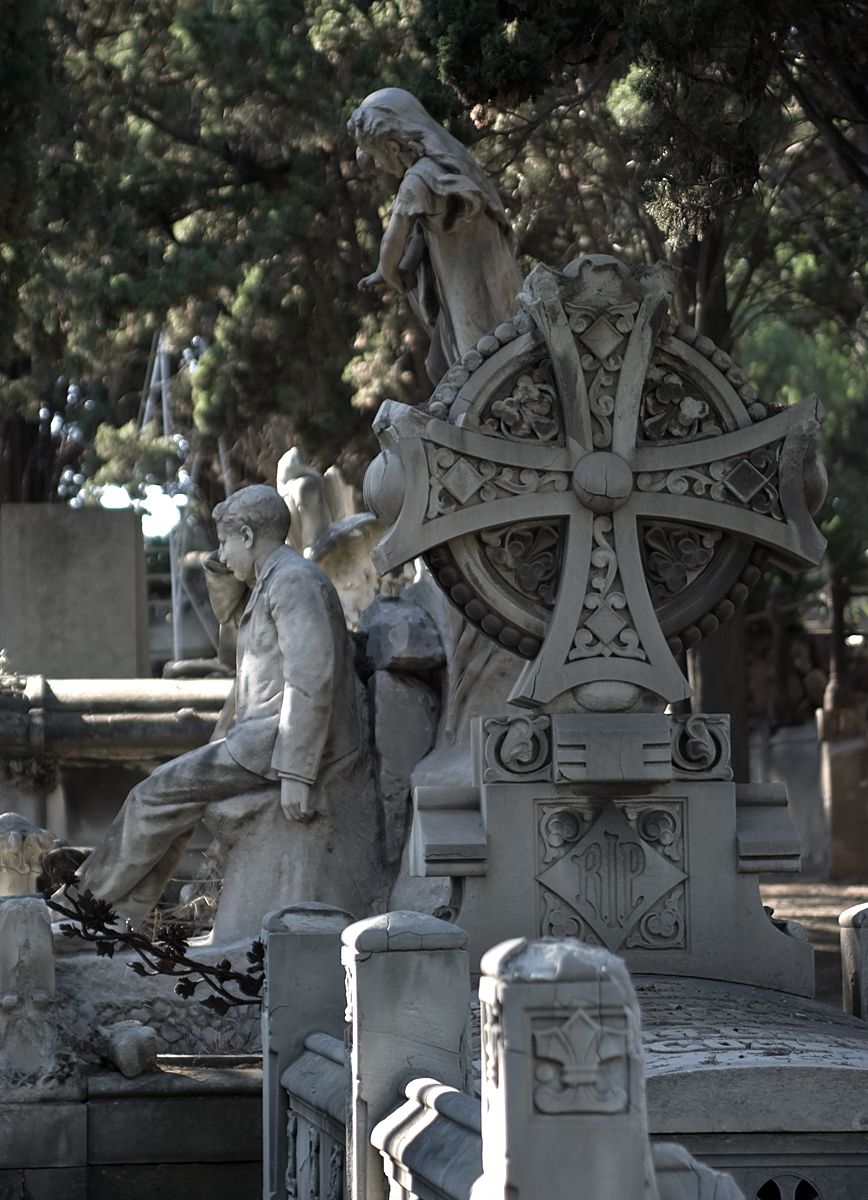सीमेंटिरी डी मोंटजुइक की सुंदरता और इतिहास का अन्वेषण करें
शानदार कब्रिस्तान वास्तुकला के साथ एक शांत जगह।
स्पेन के बार्सिलोना में सुंदर मोंटजुइक पहाड़ी के ऊपर स्थित एक स्थान है जहां इतिहास, कला और शांति का संगम होता है।सीमेंटिरी डी मोंटजुइक, या मोंटजुइक कब्रिस्तान, आपकी साधारण कब्रगाह नहीं है; यह अत्यधिक सांस्कृतिक और ऐतिहासिक महत्व का स्थान है। यदि आप बार्सिलोना में एक शांत जगह की तलाश कर रहे हैं, और साथ ही शहर के समृद्ध इतिहास की खोज कर रहे हैं, तो मोंटजुइक कब्रिस्तान जाने पर विचार क्यों न करें?

एक ऐतिहासिक टेपेस्ट्री
बार्सिलोना में एक छोटी पहाड़ी पर स्थित, सीमेंटिरी डी मोंटजुइक शहर के समृद्ध इतिहास का एक प्रमाण है। 1883 में स्थापित, यह कब्रिस्तान बार्सिलोना का सबसे बड़ा कब्रिस्तान है, और इसमें उन उल्लेखनीय हस्तियों, कलाकारों और गणमान्य व्यक्तियों के अवशेष हैं जिन्होंने शहर को आकार देने में महत्वपूर्ण भूमिका निभाई है। राजनेताओं से लेकर संगीतकारों, लेखकों से लेकर वास्तुकारों तक, यह कब्रिस्तान बार्सिलोना के शानदार अतीत की झलक पेश करता है।

कब्रिस्तान के भीतर सबसे प्रतिष्ठित खंडों में से एक "पैंटेओन डे लॉस कैटालनेस इलस्ट्रेस" (शानदार कैटालन्स का पैंथियन) है। यहाँ, आपको कैटेलोनिया के पूर्व राष्ट्रपति लुईस कंपनीस और विश्व प्रसिद्ध अतियथार्थवादी कलाकार जोआन मिरो जैसे प्रतिष्ठित व्यक्तियों के अंतिम विश्राम स्थल मिलेंगे। यह एक ऐसी जगह है जहाँ कला और इतिहास आपस में जुड़े हुए हैं, जो इसे कैटेलोनिया की सांस्कृतिक विरासत में रुचि रखने वालों के लिए एक आकर्षक स्थान बनाता है।
वास्तुकला और कलात्मक चमत्कार
कब्रिस्तान में घूमते हुए, आप देखेंगे कि स्पेन में शवों को किस तरह से दफनाया जाता है। नव-गॉथिक शैली के कब्रिस्तानों से लेकर आधुनिकतावादी और नवशास्त्रीय तक, आपको मृतकों की याद में बनाए गए कलात्मक कब्रों और स्थापत्य स्मारकों की एक विविध श्रृंखला देखने को मिलेगी। जटिल नक्काशी और मूर्तियों से सजे विस्तृत कब्रों को देखें जो दिवंगत की कहानियाँ बताते हैं। प्रत्येक टुकड़ा अपने आप में कला का एक काम है, और साथ में वे अंत्येष्टि कला का एक अनूठा आउटडोर संग्रहालय बनाते हैं।

कब्रिस्तान के मुख्य प्रवेश द्वार तक जाने वाली विशाल सीढ़ियाँ इसकी सबसे खास विशेषताओं में से एक हैं। वास्तुकार लुईस डोमेनेच आई मोंटानेर द्वारा डिज़ाइन की गई यह सीढ़ी आधुनिकता का एक शानदार उदाहरण है और बार्सिलोना और भूमध्य सागर के मनोरम दृश्य प्रस्तुत करती है। कब्रिस्तान की संरचनाएँ, जिनमें मकबरे और चैपल शामिल हैं, दशकों में वास्तुकला शैलियों के विकास को दर्शाती हैं।
शांति का स्थान
अपने ऐतिहासिक और कलात्मक महत्व के बावजूद, सीमेंटिरी डी मोंटजुइक शहर की भीड़-भाड़ वाली सड़कों से दूर एक शांत और शांत जगह है। अच्छी तरह से बनाए गए बगीचे, छायादार पेड़ और शांत वातावरण इसे आराम से टहलने, ध्यान लगाने या शहरी अराजकता से राहत पाने के लिए एक आदर्श स्थान बनाते हैं।
कब्रिस्तान की खोज
आप पूरे कब्रिस्तान के मैदान का पता लगाने के लिए आसानी से 3 घंटे तक का समय बिता सकते हैं। रोमनों के लिए श्मशान घाट देखने के लिए कब्रिस्तान के सबसे ऊंचे स्थान पर जाना न भूलें!
हर महीने दूसरे और चौथे रविवार को कैटलन और स्पेनिश में निर्देशित पर्यटन उपलब्ध हैं। हालाँकि, अगर आप किसी दूसरे दिन जा रहे हैं, या आप भाषा नहीं बोल सकते हैं, तो आप मार्ग योजना प्राप्त करने और स्व-निर्देशित दौरे पर जाने के लिए प्रवेश द्वार पर कब्रिस्तान कार्यालय में जा सकते हैं।
सीमेंटिरी डी मोंटजुइक तक पहुंचना
सीमेंटिरी डी मोंटजुइक मोंटजुइक हिल पर स्थित है, और शहर के केंद्र से सार्वजनिक परिवहन या टैक्सी द्वारा पहुँचा जा सकता है। आप लास रामब्लास के दक्षिणी छोर से कब्रिस्तान के तल तक बस ले सकते हैं, और दूसरी बस में बदल सकते हैं जो आपको ऊपर तक ले जाती है। कब्रिस्तान तक की पहाड़ी वास्तव में खड़ी है, इसलिए बस लेने की सलाह दी जाती है - लेकिन आप चाहें तो पहाड़ी पर पैदल भी चढ़ सकते हैं।
खुलने का समय और प्रवेश शुल्क
कब्रिस्तान आम तौर पर प्रतिदिन सुबह 8 बजे से शाम 6 बजे तक खुला रहता है। कब्रिस्तान में प्रवेश निःशुल्क है।